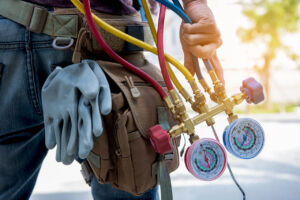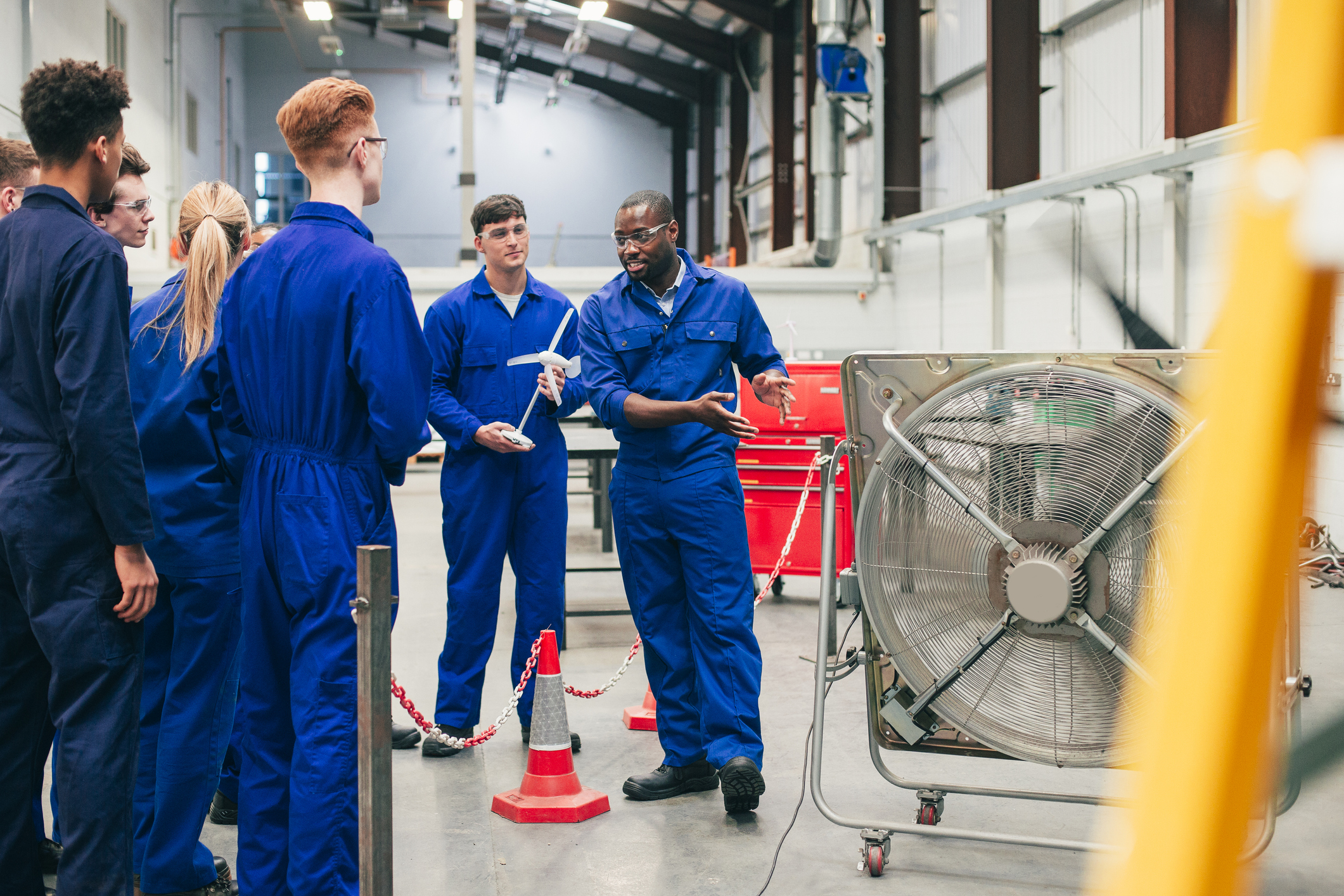Are you ready to become an HVAC technician but need help preparing for the HVAC 608 EPA certification? You are not alone. If you are prepared to take the next step toward an HVAC apprenticeship, let CyberTex train you with our 11-month HVAC program.
Do I Need an HVAC 608 EPA Certification to be an HVAC?
Yes. To become an HVAC technician, you must prove your knowledge of refrigerants and ability to handle and dispose of them safely. Since the EPA regulates refrigerants, you must pass the 608 EPA certification before handling any air conditioning, refrigerator, or freezer refrigerants.
What is a 608 EPA Certification?
The Environmental Protection Agency (EPA) regulates the maintenance, services, repair, and disposal of equipment that could release ozone-depleting refrigerants into the atmosphere.
The certification exam tests your knowledge of the ozone’s core environmental impacts, understanding of the atmospheric effects from refrigerants, health, and environmental effects, and the role of CFCs and HCFCs in the depletion of the stratospheric ozone. This exam will also test your knowledge of the definition and ability to identify high and low-pressure refrigerants. Further, questions identify your proficiency with defining system-dependent versus self-contained recycling equipment. You will also be tested on the standard for reclaimed refrigerants, sales restrictions, and the Clean Air Act prohibition on venting. Additional questions will focus on recovery and recharging techniques, dehydration evacuation, leak detection and repair, safety protocols, and proper shipping methods.
How Do I Prepare for the 608 EPA Certification?
CyberTex offers an HVAC program at our Killeen campus that trains you in as little as 11 months to work as an apprentice HVAC technician. As an apprentice, you will work under the strict supervision of a licensed HVAC technician. The training offered by CyberTex also prepares you to take the 608 EPA certification exam.
Other certifications that students take at the end of the HVAC program include:
- Green Awareness – a basic understanding of green concepts, terminology, systems, and the latest in green mechanical technology
- System Performance – tests your ability to correctly set up air conditioning and heating systems to achieve the equipment efficiency rating.
- Duct and Envelope Testing – shows that your abilities comply with the International Energy Code for new construction and retrofits. This code focuses on building envelope and duct leakage testing. This exam includes the testing procedures, methods of expressing results, and terminology.
- R-410A– addresses the issues of safe handling and training to use R-410A refrigerant.
- Gas Heat focuses on the many facets of gas heating, including combustion, system components and controls, heating sequences, installation, and troubleshooting.
- System Diagnostics & Troubleshooting – tests your knowledge of mechanical refrigeration diagnostics and troubleshooting procedures.
- Basic Refrigeration and Charging Procedures – tests your knowledge of accurately performing system installation, basic repair, and the information necessary to charge modern equipment properly.
- Hydrocarbon Refrigerants – tests your knowledge of the refrigeration cycle and proper handling of CFC, HCFC, and HFC refrigerants.
After the HVAC program, students can take the ESCO Group “Employment Ready Certification.” This certification validates a student’s understanding of the course material and provides employers with a standardized measurement of a job applicant’s knowledge and readiness.
Why Do You Need to be 608 EPA Certified?
Having the 608 EPA certification shows that an HVAC technician thoroughly understands the environmental and health risks associated with refrigerants. Plus, the knowledge on proper disposal of harmful refrigerants.
What is the Clean Air Act?
Congress has passed the Clean Air Act, allowing the EPA to solve multiple air pollution problems. The Clean Air Act calls for state, local, tribal, and federal government to partner in the fight against climate change. Health-based air quality standards are based on the latest science.
Since 1990, The Clean Air Act has helped reduce carbon monoxide emissions by 74%, Nitrogen Dioxide is down 57%, and sulfur dioxide is down 89%. This is a significant drop in air pollutants, but more is needed to meet the United Nations’ clean air standards. The UN’s Goal 13 calls for urgent action to combat climate change with the 2030 agenda for sustainable development. The Paris Agreement limits the global temperature rise to well below 2 degrees Celsius.
What is the Paris Agreement?
The Paris Agreement is a “legally binding international treaty on climate change.” One hundred ninety-six countries attending the UN Climate Change Conference in 2015 agreed to hold the increase in global average temperature well below 2 percent Celsius with a limit of 1.5 degrees Celsius above pre-industrial levels.
What is the EPA?
“The U.S. Environmental Protection Agency (EPA) protects human health and the environment.” They also provide technical assistance for long-term cleanup, environmental sampling and monitoring, site assessment, decontamination, and disposal.
What is a Refrigerant?
Refrigerants cool refrigerators and AC units to absorb heat and leave cool air behind. This is done through a compressor and evaporator. The refrigerant begins as a liquid, then expands and cools because of a drop in pressure, turning it into a gas. The gas absorbs the heat while the compressor pulls the refrigerant gas away from the inside of the refrigerator, increasing the gas pressure. When the refrigerant passes through the condenser coil, it radiates the heat into the atmosphere and cools back into a liquid.
Which Refrigerants are Used in HVAC Systems?
There are a few refrigerants that are used in refrigerators and HVAC systems. They include R-22, R-290, R-134A, R-404A, R-410A, R-450A. Because of the need to combat climate change, refrigerant regulations are in place to ban specific refrigerants and phase out others. R-12, in particular, was banned in the 1990s for contributing to greenhouse gas effects. R-22 temporarily replaced R-12 but will be phased out by 2030 to comply with the Clean Air Act of 2010.
Are There Environmentally Friendly Refrigerants?
Some of the refrigerants in the list above are eco-friendly. They include the R-290 and R-450A refrigerants. Some newer refrigerants offer more environmentally friendly properties, including R-513a and R-600z.
HVAC Technician Diploma
Want to achieve HVAC certifications to start a rewarding career as an HVAC technician in Texas? With more than two decades of success in the medical, health, and IT sectors, we added an HVAC course to our curriculum. We proudly announce that we have flexible day and evening classes for the HVAC program.
CyberTex’s HVAC program can be completed in as little as 11 months by attending full-time with the flexibility of day and evening classes. With our training, you will be eligible to take the EPA–608 certification from the US Environmental Protection Agency.
Want to learn more? Contact us today.





